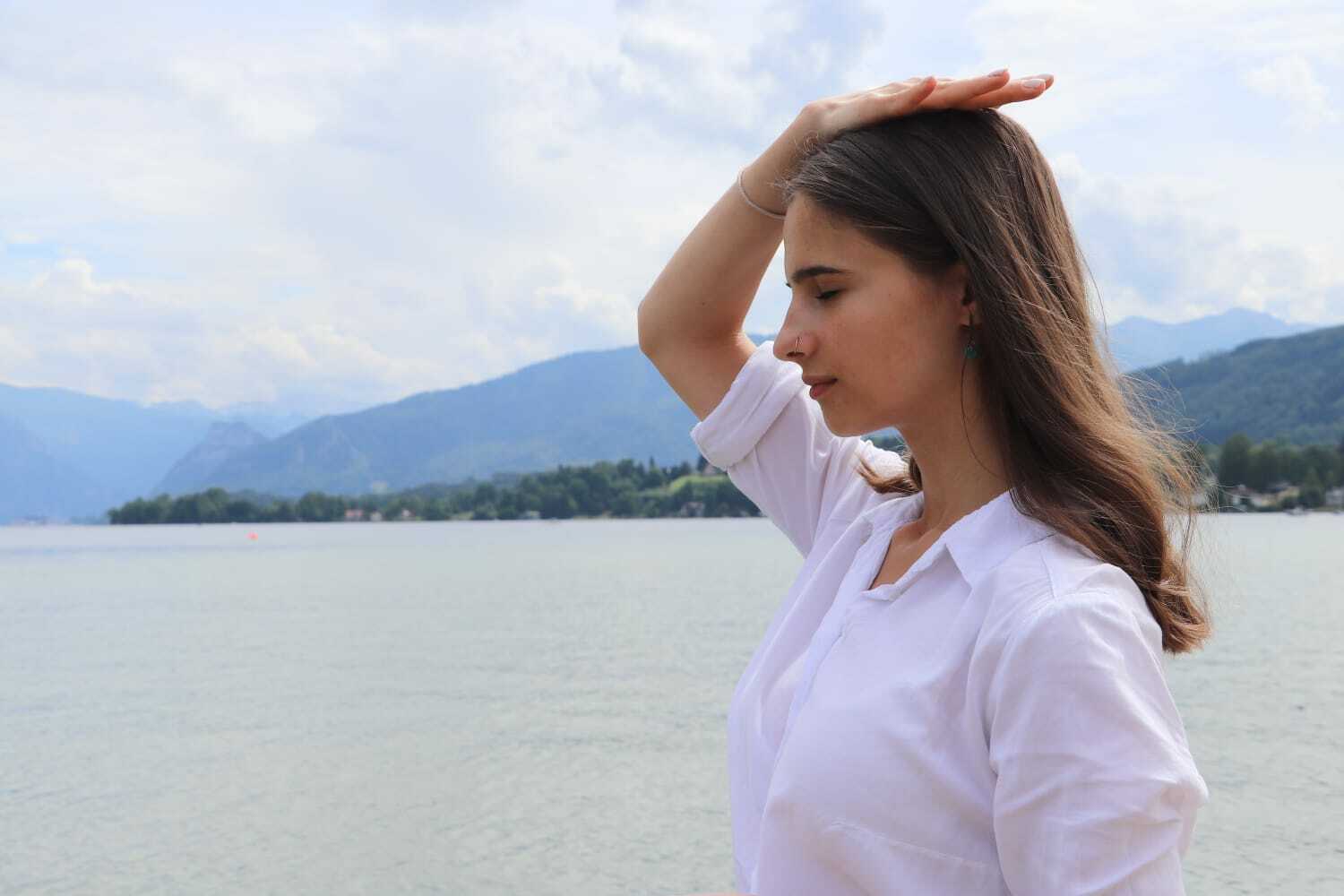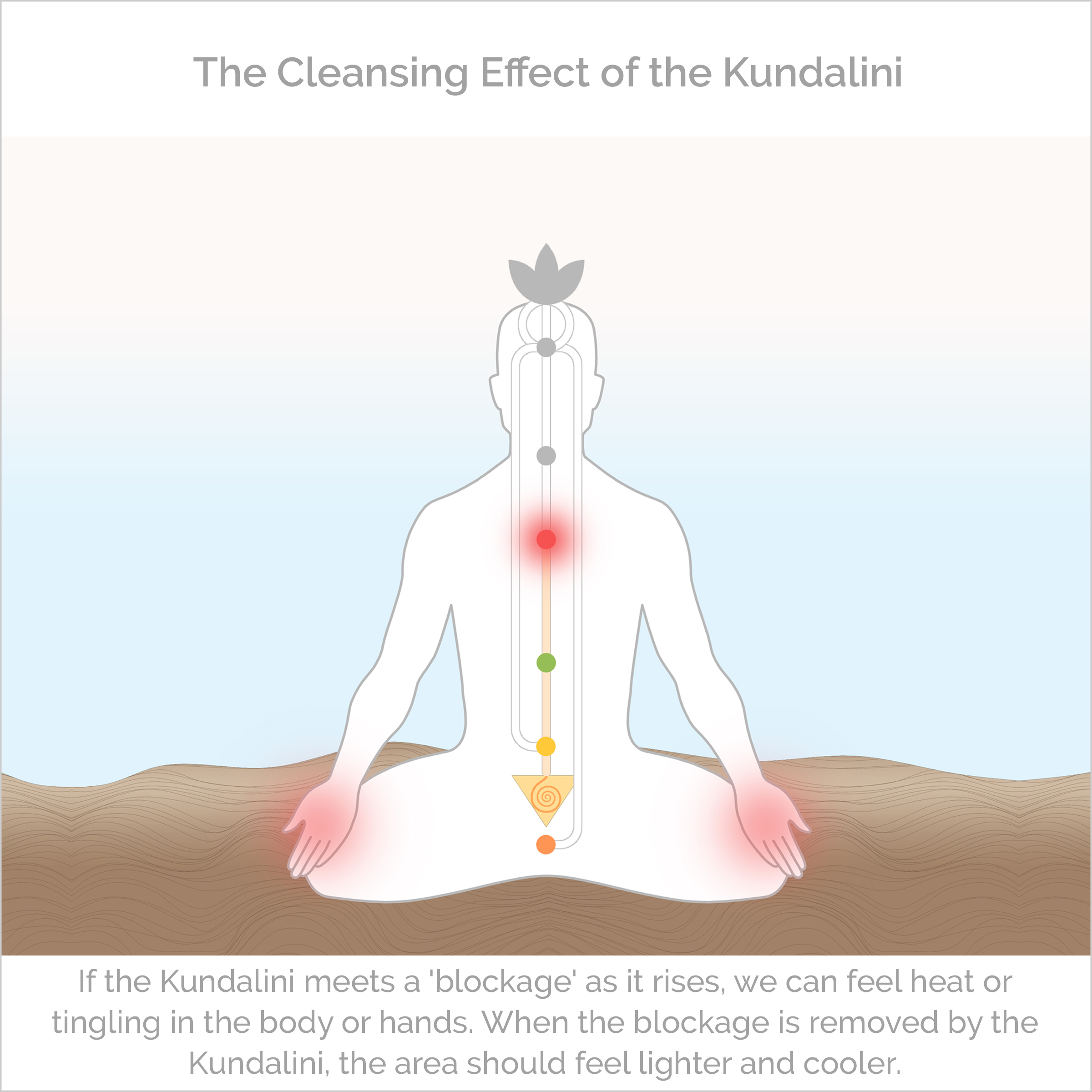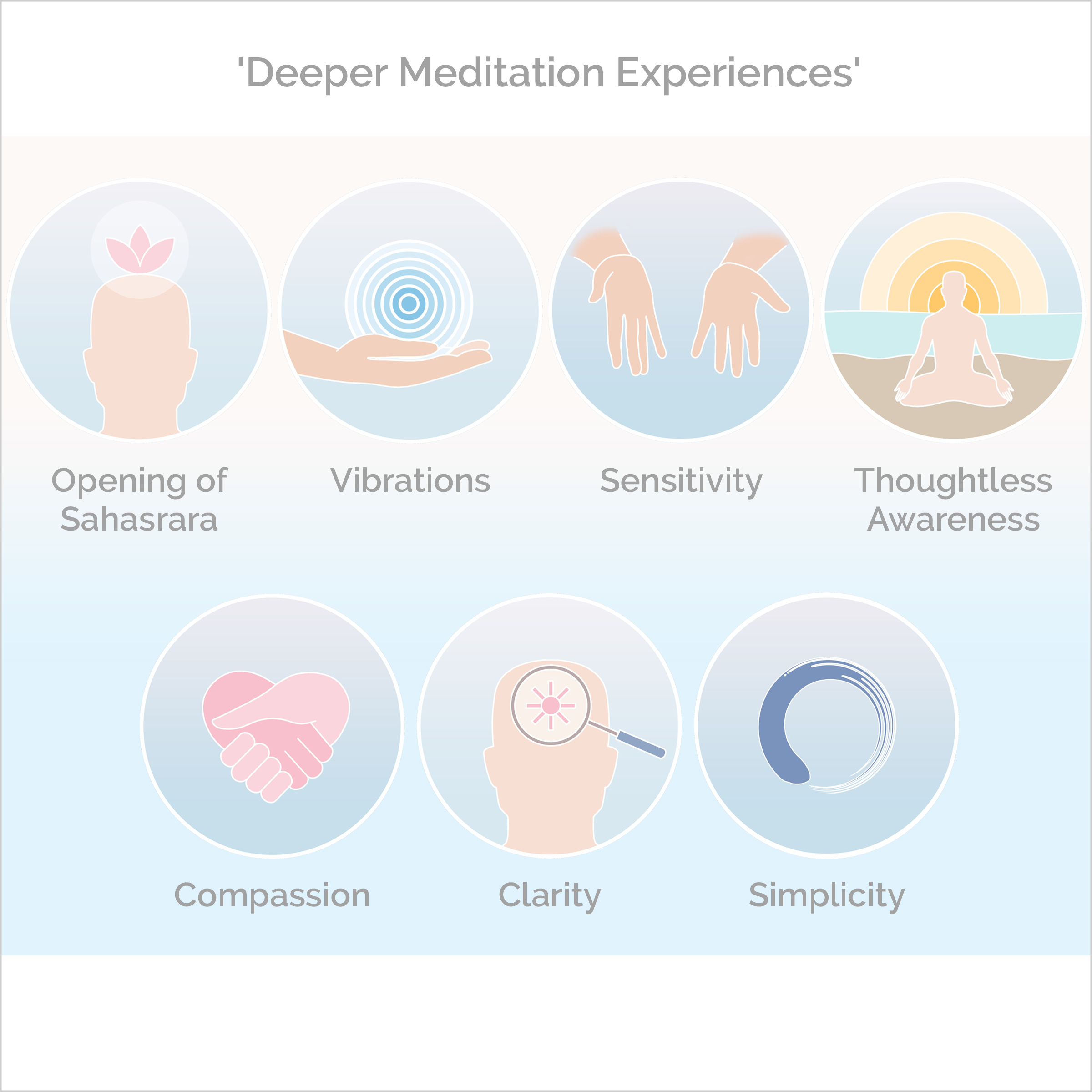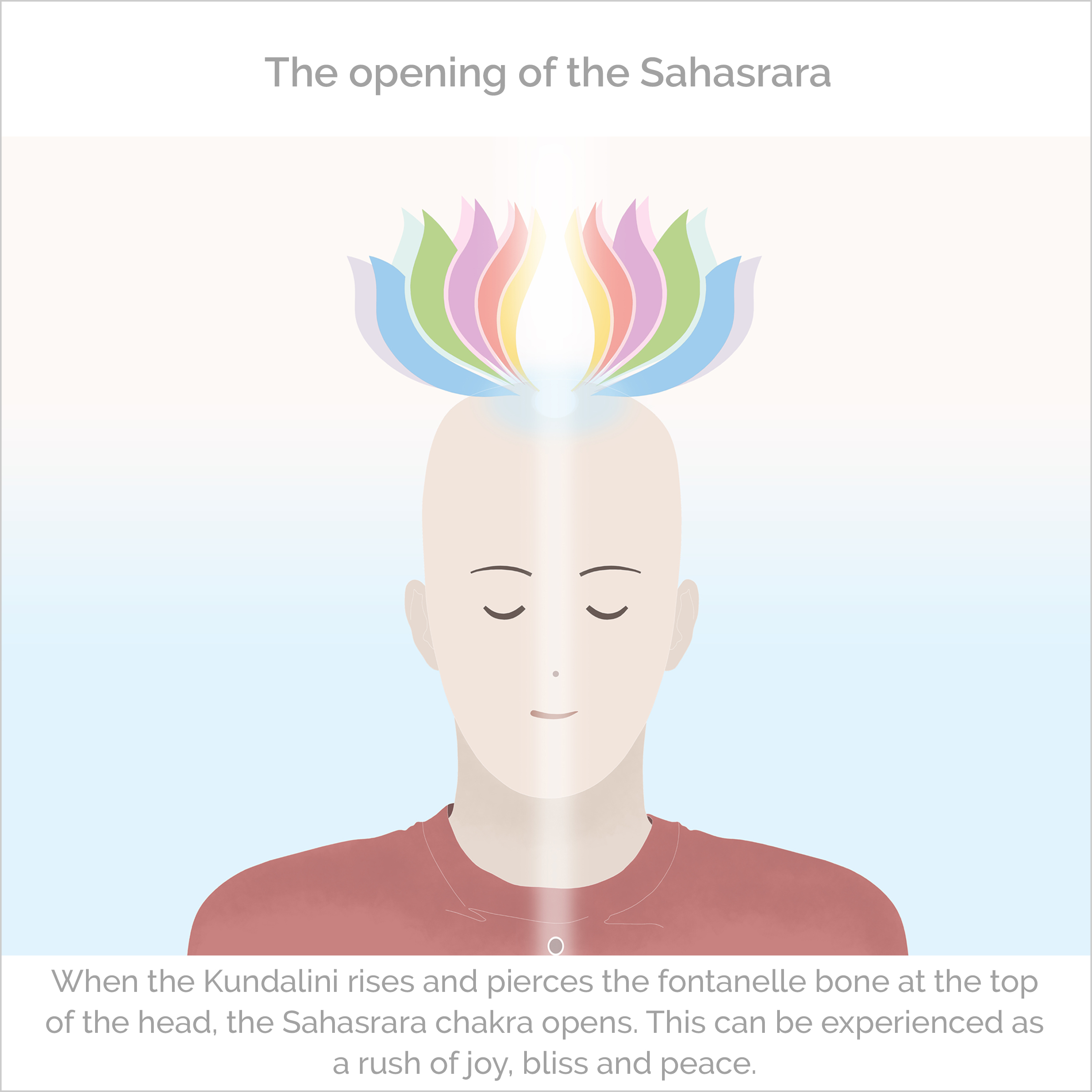From a simple feeling of satisfaction akin for some to eating a bar of chocolate, to a sense of profound contentment imagined to be attainable, say, with the combination of a puppy, novel, and a crackling fireplace in midwinter, or, for others, a vision of floating ecstatically through the abyss of infinity, living on ‘universe juice’ and stardust–we all come to meditation with certain expectations of what we might experience, with some expectations more ‘out there’ than others.
Let me be honest. The aim of meditation is not to experience something extraordinary and spectacular, rather it is to become extraordinary. It is the rare experience of going beyond all expectations we've conjured with the mind and instead being simply silent inside. At its essence, it is to be yourself through and true. This is Sahaja Yoga.
That being said, on the path to self-realisation through meditation different people will have different experiences, ranging from simple to more profound to ecstatic. Yet, as sustained meditation develops and improves, it begins to enhance the way in which we engage with our world on a daily basis.
Common Meditation Experiences
The Idea behind any meditation is to turn one’s attention from the external world to the internal world. Naturally, as our attention expands across this new space, we become more sensitive to the thoughts, feelings, and emotions that swirl within. But without guidance, our attention can become unmoored and unstable. In Sahaja Yoga, the kundalini sheds light on this inner world, where our subtle system resides.
It is the activation of the kundalini – this maternal, nourishing energy within us – that guides the process of meditation. She interacts with the intricate network of the subtle system, or in other words the autonomic nervous system, which governs the primary bodily processes, such as blood pressure and the rate of breathing.
Due to each individual’s different lifestyle choices and behavioural patterns, we experience varying degrees of cumulative wear and tear on the subtle system, which cause deficiencies, blockages, or ‘catches’ where energy gets stuck. In meditation, the kundalini repairs and resolves these blockages within our subtle system. For many first-time meditators, this repair work of the kundalini energy within us is expressed in various ways, such as sensations in the body, according to the specific blockages addressed by the kundalini. These include:
- Heat or warmth that cascades along areas of the body. This indicates that the kundalini is actively ‘clearing out’ that specific area of the body.
- Tingling sensations on a localized area of the body. This is another indicator of the kundalini clearing blockages and can feel like pins and needles, but in a not unpleasant way. If this is felt in the legs, it’s most likely just the legs falling asleep as they are not used to staying in one position for too long, as they do when we are sitting in meditation.
- Light and coolness. While the kundalini clears out stresses and imbalances within us, it can be felt in different parts of the body, as mentioned above, but the end result of this clearing is the same–a feeling of lightness and coolness in the body. One feels refreshed and relaxed. Tensions that one might have not observed before, due to having become accustomed to them, suddenly release, filling the body with a sense of relief.
- A warm or cool ‘breeze’. There can be a noticeable sensation of coolness or heat emanating from the palms or from the top of the head. This indicates that the process of self-realization has taken place. Experiencing the cool or warm breeze does not always happen for everyone during the first couple of sessions, or the experience might be quite subtle and difficult to detect, but for many it is common to experience this gentle breeze.
- Mental relaxation, or stillness of the mind, which is achieved when the attention is fixed within. Why so? Using our attention means we are ‘at tension’ since we focus our mind on a particular external object. By doubling back the attention on itself in meditation, we allow it time to reset and rest.
- Pressure on the head can be felt in cases when the chain of thought remains unbroken and consistent–when the mind keeps chattering away instead of relaxing. Be wary of not ‘forcing’ or making an effort to meditate, as this mentalizes a method that should be spontaneous and effortless.
- Drowsiness. During meditation one may start to feel sleepy or drowsy. This often happens if the practitioner has a natural tendency to be active, alert, and constantly thinking–the pendulum swings to the opposite end. This is to be expected as the point of gravity finds its center.
- Alertness. The flip side to the above is that if one tends to have a natural tendency to be more passive and lethargic, there can be a shift to a more awake and engaged state.
- Being alert and relaxed at the same time. This is the sweet spot in between the two modes of behaviour described above. When in the centre, the meditation brings the practitioner feelings of being relaxed, having to expend no effort.
- Joy. Most of all, meditation brings a feeling of joy, and when the joy begins to flow, you will know. There is not much need to elaborate on this; it is the state in which we grow in silence.
There are some meditative experiences that may sound dazzling and wonderful, but actually indicate that further clearing is recommended. These include:
- Seeing orbs of light or colours that flash even when the eyes are closed reflects an inner state that is off-balance. This could be the expression of an over-exerted sympathetic nervous system (in our terms, being ‘right-sided’. See more about this in our article about the right channel).
- Out of body experience. Similar to the above point, a feeling of hovering above one’s body in the external environment is an expression of being extremely right-sided. The whole point of meditation is to establish one’s self within, not to further engage our mind in the world outside. This type of experience is a vain pursuit.
The bottom line to remember is that the kundalini works in a manner that is gentle and delicate. If after the meditation you consistently feel drained, exhausted, or weary, then this could be an indication of forced mental effort or a severe internal blockage which prevents the kundalini from rising. Our subtle system is like a string instrument: The realization that dawned on the Buddha when he reached the height of his seeking was that the strings of an instrument are to be neither tuned too tight nor too slack.
Deep Meditation Experiences
When we are able to delve into the depths of joy with ease and effortlessness, know that your meditation is progressing well. You will notice that one meditation will not be quite the same as the next, since being in balance is to be spontaneous. It is a living process that adheres not to rules and regulations but to a law and harmony that is beyond mental conceptions.
Frustration is a clear indicator of a regimented and lifeless meditation. Be gentle on yourself and avoid feelings of frustration. Always aim to seek that joy within your being, and know that it rests on the knowledge of knowing thyself. In this process, wonderful and sublime experiences will manifest, beginning with:
- The opening of the Sahasrara. If you want to hear a good story, ask someone who has been practising Sahaja Yoga for a while about their experience in this regard. When the kundalini rises above the thoughts and pierces the area of the head known as the fontanelle, the rush of joy, bliss, and peace can be tremendous. It is as if an incandescent light is surging through each and every nerve of your body, moving in unison towards the crown of your head. It feels familiar. It feels like coming home. This is the event of yoga or union with the self. I truly wish you will feel this, too.
- Thoughtless Awareness. When the kundalini is established beyond the Sahasrara, thoughts cease to bombard one’s mind, rather they stay on the edge of awareness where they can be viewed from a distance as a detached witness. The passing of time is hard to grasp in this state, because there is no urge to plan for the future or ponder the past. In meditation, our attention is established in the present.
- Vibrations. When our Sahasrara is opened, we develop a new awareness, which is vibratory awareness. We then feel vibrations in various ways. Either they flow like a stream from the palms or the top of the head, or they can be felt as gentle pulsations across or along the spine and skull. It is similar to how light is both a wave and a particle. These pleasant sensations are an actualization of the connection established between yourself and the kundalini. They guide your attention to specific areas of the subtle system that are in need of nourishment or repair
Sustained meditation allows for a complete shift in how we perceive the world. The following qualities are enhanced in long-term practitioners of meditation:
- Sensitivity towards the mood of your surrounding, such as the peaceful bliss of dawn and its waking light, the majesty of an iridescent sunset; the joyful babble of a river and its locks of hair that undulate and sway free; the intricacy of an effulgent leaf as a silver sun filters through its maze of green pathways; and the laughter of a child that echoes in the park green. Poets become more than a bunch of enigmatic and mysterious introverts.
- Clarity and precision of thought. There is a luminance to ideas and a clearness in action that springs from knowing one’s purpose and path, knowledge which dawn in our awareness through meditation.
- Compassion and kindness. When one becomes connected to the source of joy, sharing this joy through compassion and kindness does not drain it but, on the contrary, can be a gain that elevates all.
- Simplicity in the sense that one does not need to act or put on a mask with others. You can trust yourself and trust others–be what may be. You are genuine for all to see.
Spiritual Meditation Experiences
Gregoire de Kalbermatten (1949-2016), a diplomat, UN official, and practitioner of Sahaja Yoga since the late 1970s, had the privilege of learning the technique of meditation directly from Shri Mataji–the founder of Sahaja Yoga. He relates his first experience in great lucidity.
Bliss
The room is merged in a golden, moving light or so it seems to my dilated pupils; I feel enveloped in a bath of soothing energy of Joy. HH Shri Mataji is saying: “Kundalini has risen. The parasympathetic nervous system is being activated. You do not need to do anything. The process of your second birth is sahaj, spontaneous.” I am delighted that I am not supposed to mentally strive for something because if my mind is simply to relax and be watchful I am avoiding the danger of suggestion and autosuggestion. On the other hand I am embarrassed to witness something happening to me, which is at the same time obvious and obviously out of my control. I am not in a state of hypnosis though because my intellect can and does argue: “Is it that? Is it really that?” Who is this person, in front of me, who is working as a catalyst of energies unknown to me, energies that I feel coming in my body in waves of vibrations? What about my karmas. Has she dissolved them? Will this bliss last? Suddenly I come to realise that these vibrations have an impact on my awareness also; I am softly entering a dimension where everything in the room has begun to change and yet remain the same; a majestic silence is growing within me. The noises of the mind disappear: it is as if something more real, more intense, reveals itself in the already manifested reality of myself, the air, the yellow curtains and the table: something simple and essential, this very thing I have been hunting for so long. Simple. Direct. Immediate. Obvious. Blissful. Something called Reality. This Reality that I had, in vain, tried to encompass is slowly, gently encompassing me. This is a bit too much! I cannot really face the possibility that I have reached the end of such an intensive and continuous quest. I feel sleepy… and, with HH Mataji’s blessing, go to sleep.[…]
Everyone's meditation experience is different, here I offer my own.
Silence and I
I have practised Sahaja Yoga from quite a young age. Both of my parents practised meditation. I used to sit with them in the early hours of the morning, trying my best not to fall asleep or think about which kids’ shows I might still be able to see on channel three. Meditation was relaxing. And that was about it. Entering into adolescence, my parents worked odd hours. Mum did night shifts at the childbirth ward while my dad taught music during most of the evening. My siblings and I were left to meditate on our own schedule. As the workload increased during high school, and post-school activities demanded attention, and the navigation of the social side of things pressed upon the mind, I noticed that meditation during the mornings and in the evenings became a necessity to detach and latch on to something stable, some kind of solid footing in a world changing at a breakneck pace. Still, even though my days were filled to the brim, there was an empty space within. There was a growing feeling that I had forgotten something on my way. I was incomplete. Meditation didn't quite hit the spot anymore. I could not understand why. I kept sitting for longer and longer durations of time. The only results were numb legs and a dumb, frustrated mind. I hit a dead end and looked back at the path I was walking. Where was I going? What was I looking for in the first place? Why did I feel incomplete? I stripped my meditation to the bare minimum. Just some silence and I. There, in that silence, I pivoted back to that empty space and watched. The race of thoughts, doubts, and frustrations filled that space, swirling and making a muck of things. The space received it all and took it into itself, leaving no trace behind. The empty space met my gaze, and in that moment of recognition I was embraced by a joy that filled my whole being with a bliss beyond words. Suddenly, a wave of crackling warmth shot up my spine, making my hair stand at an end as it crossed my neck into my head. My mind, a prison of thoughts, became a prism as the waves radiated in all directions. When I thought I could not handle the increasing pressure any more, it gathered force and with a pop, shot straight through the fontanelle. A coolness settled on my head and trickled down to the rest of my body and legs that, surprisingly, were not numb. It felt like a little cool flame, the size of my thumb, rested on the top of the head, while the rest of the body and the mind were drenched in silence. After a short or long duration of time I opened my eyes and let one word drop from my lips: “what?”
Discover your own meditation experience!





